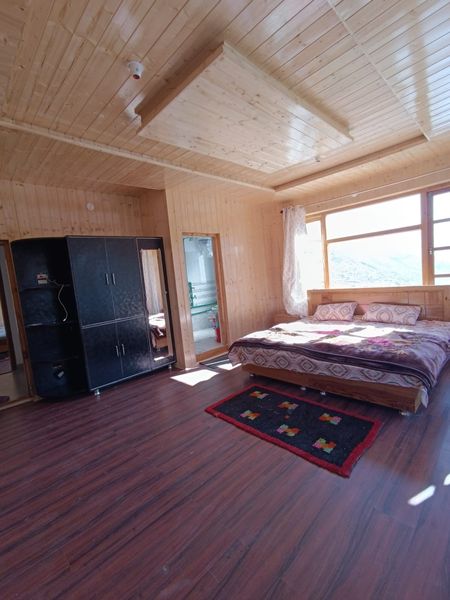Journey to the Jungle: Unleashing the Magic of Jim Corbett
 Rohit Sen
22 Oct, 2024
10 mins read
173
Rohit Sen
22 Oct, 2024
10 mins read
173

Nestled in the foothills of the Himalayas, Jim Corbett National Park is a wildlife enthusiast's dream. It’s one of India’s oldest and most prestigious national parks and a must-visit for anyone who yearns to experience the wild. Whether you’re an avid photographer, a lover of wildlife, or simply in search of a tranquil escape, Jim Corbett offers something magical for everyone. In this article, we will take you through the allure of this jungle, providing valuable insights into what makes Jim Corbett truly special.
A Brief History of Jim Corbett National Park
Established in 1936 as Hailey National Park, Jim Corbett is named after the famous hunter-turned-conservationist Edward James Corbett, who played a crucial role in its creation. Corbett was known for his efforts to protect the Bengal tiger, an animal that is now an iconic resident of the park. Spread across 520 square kilometers, the park is part of the larger Corbett Tiger Reserve, which spans more than 1,300 square kilometers.
Jim Corbett’s dedication to wildlife conservation, particularly in safeguarding the critically endangered Bengal tiger, is one of the park’s most remarkable features. The park was also the first to be included under Project Tiger, a wildlife conservation initiative launched by the Indian government in 1973. This makes it not only a haven for wildlife but also a crucial sanctuary for the continued survival of the tiger.
The Wildlife of Jim Corbett
The park is home to a rich variety of fauna, making it one of the most biodiverse national parks in India. The star attraction here is, of course, the Bengal tiger, but it’s far from the only species to capture your attention. With over 600 species of birds, 50 species of mammals, and 25 species of reptiles, there’s always something to see.
- The Bengal Tiger: Sightings of this elusive animal are a major draw, but tigers aren’t easily spotted. Visitors are often advised to embark on multiple safaris to increase their chances. The best time to catch a glimpse of a tiger is during the early morning or late afternoon safari when the big cats are most active.
- Elephants: Another majestic inhabitant of the park is the Asian elephant. These gentle giants can often be seen roaming in herds, especially near the park’s riverbanks. Watching them interact in their natural habitat is a unique experience.
- Leopards and Other Predators: In addition to tigers, Jim Corbett is home to leopards, jungle cats, and jackals. While these predators are more difficult to spot, their presence adds an element of thrilling unpredictability to each safari.
- Birdlife: For birdwatchers, Jim Corbett is nothing short of paradise. The park boasts a range of bird species from the colorful Indian Pitta to the majestic Crested Serpent Eagle. The best time to visit for birdwatching is during the winter months when migratory birds flock to the region.
Exploring Jim Corbett: A Safari Experience
The best way to explore the wilderness of Jim Corbett is a jungle safari. The park is divided into several tourism zones, each offering unique landscapes and wildlife experiences. The most popular zones are:
- Dhikala Zone: Known for its vast grasslands and excellent wildlife viewing opportunities, Dhikala is the largest and most sought-after zone in the park. It offers overnight stays in forest lodges, giving visitors a chance to fully immerse themselves in the wild.
- Bijrani Zone: This zone is ideal for day safaris and offers lush vegetation and an array of wildlife, from elephants to various species of deer. It’s also a great place for birdwatching.
- Jhirna Zone: Open to visitors throughout the year, Jhirna is one of the few zones that remains accessible during the monsoon season. It’s known for its hilly terrain and a healthy population of sloth bears and leopards.
- Dhela Zone: The newest addition to Jim Corbett, Dhela offers a mix of dense forests and open meadows, making it an excellent location for spotting elephants and tigers.
For the best safari experience, opt for a guided tour with an experienced naturalist who can offer in-depth insights into the park’s ecology and wildlife. Whether it’s a jeep safari or an elephant-back safari, the thrill of being near wild animals is unparalleled.
Beyond Wildlife: Other Attractions in Jim Corbett
While wildlife is the main attraction, Jim Corbett National Park offers plenty of other experiences. The landscape itself is a beauty to behold, with its combination of rivers, hills, grasslands, and dense forests. The park is bisected by the Ramganga River, where you can often spot crocodiles and otters sunbathing along its banks.
For the more adventurous, activities like river rafting, fishing, and trekking are available in the surrounding areas. If you’re a history buff, you can visit the Jim Corbett Museum in Kaladhungi, where you’ll learn more about the life and legacy of the park’s namesake.
Best Time to Visit Jim Corbett
Jim Corbett is open year-round, but the best time to visit depends on what you wish to see. The park’s core areas are closed during the monsoon season (June to mid-November), but the buffer zones like Jhirna remain accessible. The cooler months from November to February are ideal for birdwatching and comfortable safari experiences. If spotting a tiger is your priority, plan your visit between March and June, when animals frequent waterholes, increasing your chances of sightings.
Eco-Tourism and Responsible Travel
As one of the world’s most renowned national parks, Jim Corbett draws large numbers of tourists. While this benefits the local economy, it also places pressure on the environment. It is crucial to promote responsible travel by following the park’s rules, avoiding littering, and respecting the animals' space. Opt for eco-friendly accommodation and support local businesses that prioritize sustainability.
Final Thoughts: Why Jim Corbett is a Must-Visit Destination
Jim Corbett National Park offers more than just a trip to the jungle; it’s an opportunity to connect with nature at its purest. Whether you’re tracking the elusive tiger, watching a herd of elephants bathe in the river, or simply soaking in the serenity of the forest, the magic of Jim Corbett lies in its ability to make you feel like a part of the wilderness. It’s a journey of discovery, not just of wildlife, but of the incredible ecosystem that has been carefully preserved for generations.
For travelers looking for a unique blend of adventure and tranquility, Jim Corbett National Park is an unmatched destination. The memories of the jungle and its wonders will stay with you long after you’ve left the park's gates.
Written By:
Rohit Sen



Hotels at your convenience
Now choose your stay according to your preference. From finding a place for your dream destination or a mere weekend getaway to business accommodations or brief stay, we have got you covered. Explore hotels as per your mood.





